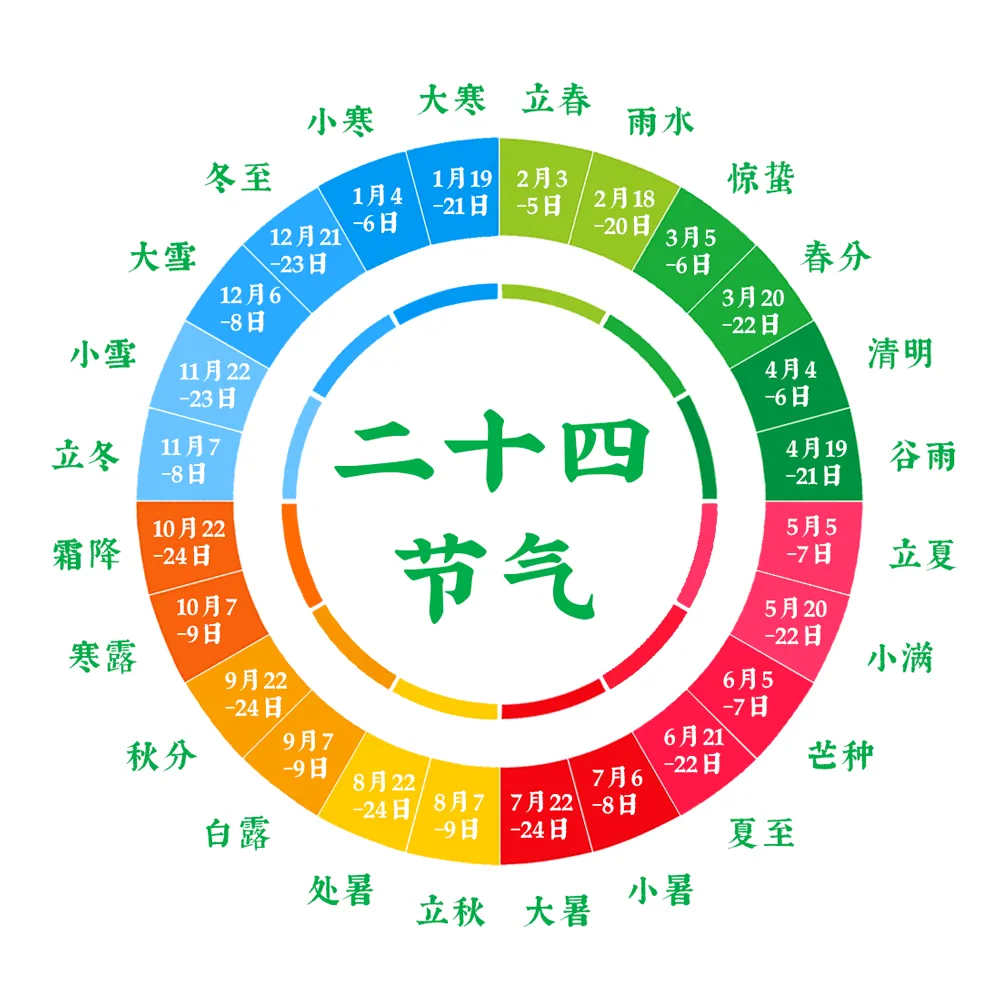The twenty-four solar terms are specific time points in the traditional Chinese calendar that represent the changes in natural rhythms and establish the “twelve month-based system.” They accurately reflect the changes in natural rhythms and play a crucial role in people’s daily lives. It is not only a time system guiding agricultural production but also a folk system containing rich folk customs. The twenty-four solar terms embody profound cultural connotations and historical accumulation, and are an important part of the long history and culture of the Chinese nation.
The twenty-four solar terms are a product of ancient agricultural civilization. They are a knowledge system formed by the ancient ancestors adapting to agricultural seasons and understanding the changes in seasonal, climatic, and phenological patterns through observing celestial movements. Initially, the twenty-four solar terms were based on the rotation of the Big Dipper. The seven stars of the Big Dipper revolve in a circle, and one cycle of the handle rotating clockwise is called a “year” (Shuoti). The current “twenty-four solar terms” are based on the position of the sun in the ecliptic, dividing the annual orbit of the sun into 24 equal parts, with each part being 15 degrees, and each part being a solar term. In one year, there are four seasons, each with three months, and each month has two solar terms, each with its unique meaning.
Through historical development, the lunar calendar absorbed the solar terms of the Stem-Branch calendar as a supplement to the calendar, and adjusted them through the “intercalation method” to make them conform to the tropical year, forming the Yin-Yang Heliocentric calendar. The “twenty-four solar terms” thus became an important part of the lunar calendar. The twenty-four solar terms have had a significant influence on later calendar-making, making them one of the core theories of traditional Chinese meteorology. In the international meteorological community, the twenty-four solar terms are regarded as the “Fifth Great Invention of China.” On November 30, 2016, the twenty-four solar terms were officially included in the UNESCO Representative List of the Intangible Cultural Heritage of Humanity.

